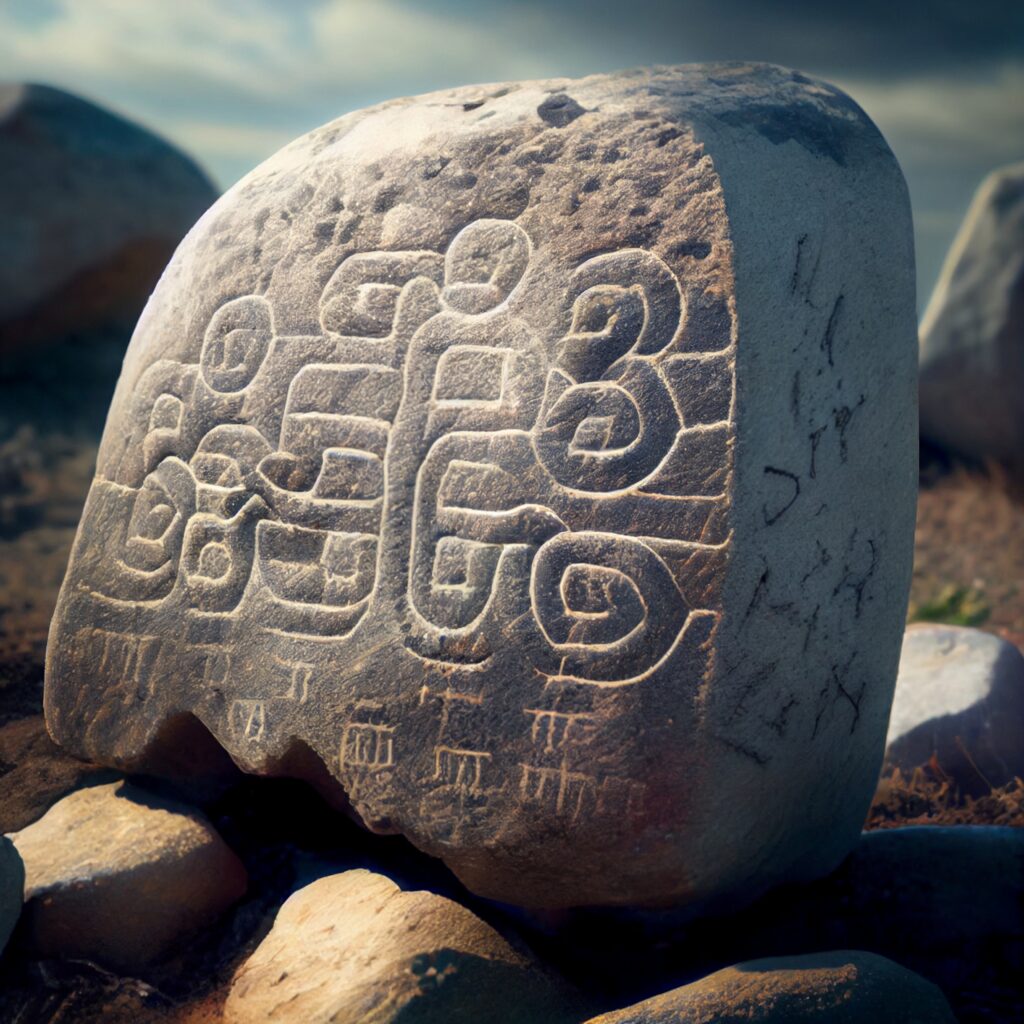Welcome to a journey that explores the extraordinary and the unexplainable. In this captivating exploration, we dive into the enigmatic realm where science intersects with the miraculous. Brace yourself as we embark on an enlightening quest to unravel the mysteries that defy scientific explanation and challenge the boundaries of human understanding. Join us as we delve into the Science of Miracles.
Key Takeaways:
- The Science of Miracles explores the unexplainable events that defy scientific understanding.
- Faith plays a significant role in the occurrence of miracles.
- Throughout history, miracles have been documented in various religious texts.
- The scientific method faces limitations when it comes to studying miracles.
- Synchronicity and coincidence often accompany miraculous events.
The Role of Faith in Miracles
In the realm of miracles, faith plays a fundamental role. Across different cultures and religions, the belief in divine intervention and the power of faith is deeply ingrained. It is this unwavering trust and conviction that often act as the catalyst for miraculous events to unfold.
When faced with seemingly insurmountable challenges or dire circumstances, individuals turn to their faith as a source of hope and strength. The role of faith in miracles extends beyond mere belief; it fosters a deep connection to a higher power and opens the doorway for extraordinary occurrences.
“Faith is to believe what you do not see; the reward of this faith is to see what you believe.” – Saint Augustine
Various religious and spiritual teachings highlight the importance of faith in experiencing miracles. In Christianity, for instance, Jesus often emphasized the significance of faith in witnessing miracles. In the Gospel of Matthew, Jesus tells his disciples that with faith as small as a mustard seed, they can move mountains.
Similarly, in Islam, the Quran speaks of the role of faith in miracles, stating that Allah can grant miracles to those who believe steadfastly in His power. The power of faith is also highlighted in Hinduism, Buddhism, and many other faith traditions, demonstrating a universal belief in the connection between faith and miracles.
One of the most well-known examples of the role of faith in miracles is the story of the biblical figure, Moses. According to the Book of Exodus, Moses led the Israelites out of Egypt through the Red Sea, which miraculously parted, allowing them to escape their pursuers. It was Moses’ unwavering faith in God’s guidance and the divine intervention that led to this extraordinary event.
The role of faith in miracles goes beyond religious contexts. In the realm of healing, faith is often credited as a contributing factor to physical and emotional recovery. Numerous studies have shown that patients who have strong faith and believe in the possibility of healing experience greater positive outcomes in their health journeys.
| Religion | Key Beliefs |
|---|---|
| Christianity | Belief in the power of Jesus Christ and the Holy Spirit to perform miracles. |
| Islam | Belief in Allah’s ability to grant miracles through faith and devotion. |
| Hinduism | Belief in the divine presence and the ability of deities to perform miracles. |
| Buddhism | Belief in the power of enlightenment and the potential for miracles through spiritual development. |
While the role of faith in miracles is undeniable, it is important to note that faith does not guarantee the occurrence of miracles in every situation. Miracles, by their very nature, are extraordinary events that transcend our understanding of the natural world. They are not bound by our expectations but rather serve as reminders of the limitless potential that lies beyond our comprehension.
As we explore the fascinating world of miracles, it is essential to recognize the profound role of faith in unlocking the extraordinary. Whether through religious devotion or personal conviction, faith has the power to transform lives and usher in miracles that defy explanation.
Miracles in History and Religious Texts
In the exploration of miracles, it is crucial to delve into their historical context and their presence in religious texts. Throughout history, various religious traditions have documented extraordinary events and phenomena that defy scientific explanation. These accounts, found in sacred writings such as the Bible, Quran, and other religious texts, serve as a testament to the enduring belief in the miraculous.
Religious texts are often considered a rich source of spiritual guidance and wisdom. They provide insight into the mysteries of the universe and offer accounts of miraculous occurrences that have impacted the lives of believers. These stories of divine intervention and supernatural events have been passed down through generations, shaping the religious practices and beliefs of millions around the world.
“Miracles are a bridge between the visible and the invisible, the natural and the supernatural, the ordinary and the extraordinary.”
Examples of Miracles in Religious Texts
Let’s explore a few notable examples of miracles from different religious traditions:
- The Parting of the Red Sea: In the book of Exodus in the Bible, it is described how Moses, with the power of God, parted the waters of the Red Sea, allowing the Israelites to escape from the pursuing Egyptian army.
- The Virgin Birth: The Christian tradition holds the belief in the miraculous conception of Jesus, where the Virgin Mary conceived him without any physical intimacy, signifying his divine nature.
- The Night Journey: In Islamic tradition, the Prophet Muhammad embarked on a miraculous journey known as the Isra and Mi’raj. He traveled from Mecca to Jerusalem and ascended to the heavens, meeting previous prophets and receiving revelation from Allah.
These examples are just a glimpse into the vast array of miraculous events chronicled in religious texts. They serve as pivotal moments that reinforce faith and illustrate the intervention of a higher power in human affairs.
Miracles in religious texts are not merely supernatural occurrences but hold deep symbolic and spiritual significance. They often convey messages of divine love, guidance, and the power of faith. They inspire believers to embrace a sense of wonder and awe, reinforcing their beliefs and affirming the presence of something greater than themselves.
Miracles and the Scientific Method
When it comes to studying miracles, the scientific method faces unique challenges. The nature of miracles, by their very definition, often transcends the boundaries of empirical evidence and scientific scrutiny.
The scientific method relies on measurable and repeatable observations to form hypotheses, gather data, and draw conclusions. However, miracles, by their very nature, are often one-time events that defy conventional explanations.
The limitations of scientific inquiry become evident when attempting to understand the extraordinary events that unfold through miracles. While science strives to explain the world through natural laws and causal relationships, miracles seem to suspend these laws, leaving scientists grappling with the inexplicable.
Debates surrounding miracles and the scientific method continue to spark curiosity and controversy. Some argue that miracles are ultimately beyond the grasp of scientific analysis, as they involve supernatural or divine intervention that cannot be measured or replicated.
“Miracles are not in the natural order of things. They are possible within the ambit of the supernatural. Science deals with the natural, not the supernatural.”
Others maintain that exhaustive scientific examination can shed light on the mechanisms behind miracles, eventually integrating them into our understanding of the natural world.
“While miracles may appear mysterious or paradoxical, they might simply be phenomena that we have yet to fully comprehend. Science has always been a tool for expanding our knowledge and challenging preconceived notions.”
Ultimately, the exploration of miracles and the scientific method raises profound questions about the nature of reality, the limits of scientific inquiry, and the interplay between faith and empirical evidence.
| Challenges | Limitations | Debates |
|---|---|---|
| The unique nature of miracles makes them difficult to study using traditional scientific methods. | The one-time occurrence of miracles and their defiance of natural laws pose limitations to scientific inquiry. | The role of supernatural or divine intervention in miracles sparks debates on their compatibility with scientific analysis. |
| The subjective nature of miracles makes empirical evidence challenging to obtain and analyze. | The boundaries of scientific understanding can be pushed through the study of miracles and the search for explanations beyond current knowledge. | Scientists and theologians continue to discuss and explore the possibility of integrating miracles into our understanding of the natural world. |
While the scientific method may struggle to fully comprehend the phenomena of miracles, the pursuit of understanding and the exploration of the unexplainable remain critical in expanding our knowledge and belief systems.
The Power of Synchronicity and Coincidence
In the realm of miracles, synchronicity and coincidence play a powerful role in shaping our perception and understanding. These phenomena often accompany extraordinary events, adding an element of mystery and awe to our experiences.
Synchronicity, a concept popularized by Swiss psychiatrist Carl Jung, refers to meaningful coincidences that occur without any apparent causal connection. It is when events align in a way that seems too perfect to be mere chance, evoking a sense of harmony and purpose beyond our understanding.
“Synchronicity is an ever-present reality for those who have eyes to see.” – Carl Jung
Coincidence, on the other hand, refers to the occurrence of two or more events that seem to be related but are not directly connected. While coincidences are often dismissed as random chance, they can carry profound significance and offer glimpses into the interconnectedness of our universe.
Both synchronicity and coincidence can give us a heightened sense of wonder and reinforce our belief in a higher power at work. They remind us that there is more to life than meets the eye, and that miracles can manifest through seemingly ordinary and everyday occurrences.
Meaningful Connections and Miracles
In the realm of miracles, synchronicity and coincidence often serve as signs or guiding forces, leading individuals to recognize and embrace the extraordinary. They act as bridges between the visible and invisible, pointing towards a deeper and more profound reality.
Meaningful connections emerging from synchronicity and coincidence can strengthen our faith, affirm our beliefs, and instill hope in moments of uncertainty. They can remind us that there is a higher order at play, and that miracles can break through the boundaries of our understanding.
The power of synchronicity and coincidence lies in their ability to awaken us to the interconnectedness of all things and to the vast potential that exists within the fabric of our reality. They invite us to remain open to the mysteries of life, encouraging us to embrace the unexplainable with wonder and gratitude.
Examples of Synchronicity and Coincidence in Miracles
| Synchronicity | Coincidence |
|---|---|
| An individual’s prayer for healing aligns perfectly with the arrival of a renowned healer. | A person narrowly misses a catastrophic accident, only to discover that the event led to a life-changing opportunity. |
| A series of synchronistic events leads an individual to discover their life’s purpose. | A chance encounter with a stranger on a train sparks a chain of events that transforms someone’s life. |
| A person receives a timely message or sign just when they need guidance or reassurance. | Twin flames reconnect after years of separation, spontaneously and unexpectedly. |
As the examples above illustrate, synchronicity and coincidence often reveal themselves in moments of tremendous significance. They provide a glimpse into the intricate workings of the universe and remind us that miracles are not confined to the realm of the unattainable, but are woven into the fabric of our everyday lives.
Miracles in the Natural World
The natural world is filled with wonders that often defy explanation. From unexplained healings to extraordinary survival stories, the realm of miracles extends far beyond the realm of human experience. These instances of seemingly impossible occurrences in nature invite us to contemplate the mysteries and miracles that exist within the fabric of our world.
One remarkable example of a miracle in the natural world is the story of Aron Ralston, who miraculously survived a canyoneering accident in Utah’s remote Blue John Canyon. Trapped by a boulder pinning his arm, with limited supplies and no means of communication, Ralston resorted to an unthinkable choice – amputating his own arm to save his life. This awe-inspiring tale of human resilience and survival against all odds serves as a reminder that miracles can arise even in the most dire circumstances.
“In every walk with nature, one receives far more than he seeks.” – John Muir
The world’s natural wonders also provide ample evidence of miracles that occur beyond the realm of human intervention. For example, the migration of monarch butterflies across vast distances is a phenomenon that defies scientific explanation. These delicate creatures are able to navigate long distances, crossing thousands of miles from their breeding grounds to their overwintering sites, without any prior experience or instruction.
“Just when the caterpillar thought the world was over, it became a butterfly.” – Anonymous
In addition, there are countless instances of seemingly impossible occurrences in nature, such as the formation of intricate snowflakes and the exquisite patterns of coral reefs. These natural wonders serve as a testament to the sheer complexity and beauty of the world we inhabit. While science continues to unravel the mysteries of the natural world, the miracles that exist within it remain awe-inspiring and unfathomable.
The Miracles of Nature
| Miracle | Description |
|---|---|
| Unexplained Healings | Instances of spontaneous healing that can’t be attributed to conventional medical interventions. |
| Survival Against All Odds | Extraordinary stories of individuals defying death and surviving seemingly impossible circumstances. |
| Migratory Phenomena | The incredible ability of animals to navigate and migrate across vast distances with precision and accuracy. |
| Intricate Patterns in Nature | The formation of intricate and symmetrical patterns in natural phenomena, such as snowflakes and coral reefs. |
The Science Behind Miracles
In the search to understand miracles, science offers intriguing explanations that shed light on the mysterious and awe-inspiring. Exploring realms such as quantum physics, consciousness, and the power of intentionality, scientists have delved into the inner workings of these extraordinary occurrences.
Quantum physics, a branch of physics that studies the behavior of matter and energy at the smallest scales, provides a fascinating lens through which to view miracles. In the realm of quantum mechanics, particles can exist in multiple states simultaneously and be connected across vast distances, defying traditional notions of time and space. This concept opens up the possibility for seemingly miraculous phenomena to occur.
Consciousness, the awareness and perception of ourselves and the world around us, is another area of scientific study that plays a crucial role in understanding miracles. Some theories suggest that our consciousness has the power to influence physical reality, including the occurrence of extraordinary events that defy natural laws. The power of focused intentionality and belief, often central to miracles, is believed to activate this potential.
-“The power of intention and belief is like a key that unlocks the door to miraculous possibilities.” – Dr. Amanda Blake
While the scientific explanations behind miracles continue to evolve, it is important to note that not all phenomena labeled as miraculous have a scientific basis. Some experiences may not yet be fully understood by current scientific knowledge and require further exploration.
| Scientific Theories Explaining Miracles | Description |
|---|---|
| Quantum Entanglement | The entanglement of particles across vast distances opens up the potential for unexplained connections and seemingly miraculous events. |
| Consciousness and Reality | The power of consciousness and focused intentionality in influencing the physical world, allowing for the manifestation of miracles. |
| Psychological Factors | The impact of belief, expectation, and altered states of consciousness on perception, potentially leading to the experience of miracles. |
As we strive to unravel the mysteries behind miracles, the intersection of science and spirituality continues to be a fascinating field of inquiry. The merging of these disciplines offers the possibility of a deeper understanding of the extraordinary, bridging the gap between the explainable and the unexplainable.
Contemporary Perspectives on Miracles
As our understanding of the world evolves, so too do the perspectives on miracles. Scientists, theologians, and skeptics continue to engage in debates, offering unique insights into these extraordinary phenomena. Moreover, personal testimonies and experiences from individuals who claim to have witnessed or experienced miracles provide a profound glimpse into the impact of these events.
Contemporary scientists approach miracles with a mix of curiosity and skepticism. Some seek to explain these occurrences through rational and scientific frameworks, exploring the boundaries between the known and the mysterious. Others, however, acknowledge that there are aspects of miracles that elude scientific understanding, presenting an opportunity for further exploration.
“Miracles are a testament to the unexplained wonders of our universe. They challenge our limited perception and present an opportunity to expand our understanding of reality.”
Theologians, on the other hand, interpret miracles through the lens of faith. For believers, miracles serve as evidence of divine intervention and a deepening of their spiritual journey. Religious texts and teachings often highlight the transformative power of miracles and the role they play in reinforcing faith and providing hope.
“Miracles are a manifestation of God’s presence in our lives. They remind us of the infinite possibilities that exist beyond what we can comprehend.”
Skeptics approach miracles with a healthy dose of skepticism and critical analysis. They scrutinize the purported evidence, seeking natural explanations for seemingly miraculous events. Skeptics often challenge the validity of personal testimonies, calling for scientific rigor and empirical evidence to substantiate claims of miracles.
“While captivating, miracles often require further investigation and critical thinking. We must endeavor to unravel the truth behind extraordinary claims and explore all possible explanations.”
Opinions and Personal Testimonies
Countless individuals from diverse backgrounds have shared their personal experiences with miracles. These accounts offer a range of perspectives, adding depth and nuance to the ongoing discussions surrounding miracles.
- Emily, a cancer survivor: “I experienced a miraculous healing during my battle with cancer. It felt inexplicable and beyond the realm of medical science. This experience strengthened my faith and reshaped my perspective on life.”
- Dr. James Turner, neuroscientist: “As a scientist, I strive to uncover the underlying mechanisms of extraordinary events. While I have witnessed cases where scientific explanations fall short, I remain intrigued by the potential of the unexplained.”
- Sarah, a self-proclaimed skeptic: “I’ve always approached miracles with skepticism, questioning the validity of claims. However, witnessing a seemingly impossible event firsthand forced me to reconsider my position and explore alternative explanations.”
These contemporary perspectives on miracles reflect the ongoing dialogue between science, faith, and skepticism. They remind us of the inexhaustible mysteries that exist in our world and the transformative power of extraordinary experiences.
| Perspective | Key Points |
|---|---|
| Scientists | Seek to explain miracles through rational and scientific frameworks, while acknowledging the limits of scientific understanding. |
| Theologians | Interpret miracles as divine intervention, reinforcing faith and offering hope. |
| Skeptics | Approach miracles with skepticism, scrutinizing evidence and calling for scientific rigor. |
Exploring the Boundaries of the Unexplainable
As humans, we constantly seek answers and explanations for the mysteries of life. Yet, there are phenomena that defy our understanding and push the boundaries of the unexplainable. These enigmas challenge the limits of scientific knowledge and leave us in awe of the wonders that exist beyond our comprehension.
While science has made tremendous progress in unraveling the complexities of the universe, there are still aspects that elude rational explanation. The boundaries of the unexplainable remind us of the vastness of existence and the inherent limitations of human understanding.
Within these boundaries lie miracles, those extraordinary events that surpass our logical frameworks. Miracles invite us to stretch our perception of reality and embrace the inexplicable. They offer a glimpse into a realm where the laws of nature and the power of belief converge, shaking the very foundation of our assumptions.
By acknowledging the boundaries of the unexplainable, we open ourselves to new possibilities and paths of exploration. We are reminded that there is more to life than what can be measured or quantified. Miracles serve as a powerful catalyst for expanding our consciousness, nurturing our sense of wonder, and deepening our connection with the divine.









































